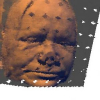Free Online Productivity Tools
i2Speak
i2Symbol
i2OCR
iTex2Img
iWeb2Print
iWeb2Shot
i2Type
iPdf2Split
iPdf2Merge
i2Bopomofo
i2Arabic
i2Style
i2Image
i2PDF
iLatex2Rtf
Sci2ools
CVPR
2000
IEEE
2000
IEEE
Visual Tunnel Analysis for Visibility Prediction and Camera Planning
A sequence of images taken along a camera trajectory captures a subset of scene appearance. If visibility space is the space that encapsulates the appearance of the scene at every conceivable pose and viewing angle, then the act of acquiring the image sequence constitutes "carving a volume in visibility space." We call such a volume a visual tunnel. The analysis of the visual tunnel allows us to do the following: predict the range of virtual camera poses in which the images can be reconstructed totally using the captured rays, predict which parts of the image can be generated for a given virtual camera pose, and plan camera paths for scene visualization at desired locations. We describe our visual tunnel concept and provide illustrative examples in 2D and 3D.
Computer Vision | CVPR 2000 | Plan Camera Paths | Virtual Camera Pose | Visibility Space | Visual Tunnel | Visual Tunnel Concept |
| Added | 12 Oct 2009 |
| Updated | 30 Oct 2009 |
| Type | Conference |
| Year | 2000 |
| Where | CVPR |
| Authors | Sing Bing Kang, Peter-Pike J. Sloan, Steven M. Seitz |
Comments (0)

